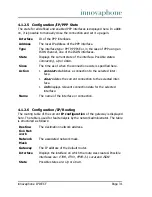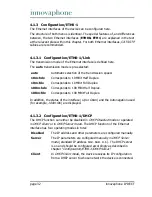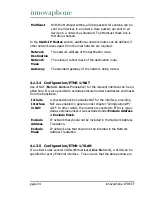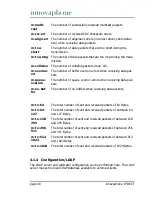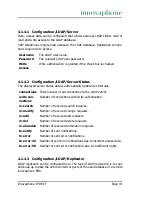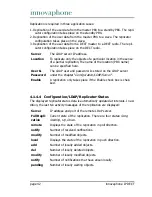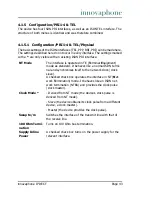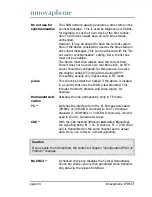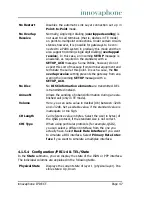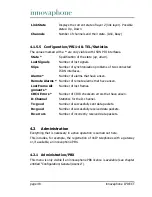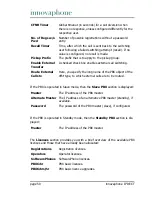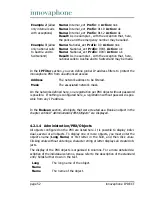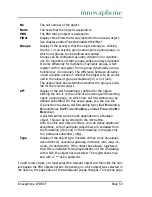
page 44
innovaphone IP DECT
Do not use for
synchronisation
The ISDN network usually generates a time stamp in the
Connect message. This is used by telephones or PABXs,
for example, to set their own clock at the first connec-
tion. The devices usually pass on such time stamps,
unchanged.
However, it may be desired to have the current system
time of the device consistently used as the time stamp in
all Connect messages. This can be achieved with the “Do
not use for synchronisation” setting. Here, the list box
must not be enabled.
The device must then always have the correct time.
Since it does not have its own real-time clock, an NTP
server should be configured for this purpose. See also
the chapter entitled “
Configuration/General/NTP
”.
This setting usually only makes sense in NT mode.
µ-law
This check box must be checked if the device is located
in a country that uses the ISDN µ-law standard. This
includes the North America and Asian region, for
example.
Permanent Acti-
vation
Activates the line permanently. Only in TE mode.
T1 *
Switches the interface from the E1 European standard
(2MBit/s or 30 ISDN D channels) to the T1 American
standard (1.544 MBit/s or 24 ISDN D channels), which is
used in the US, Canada and Japan.
CAS *
With the CAS method (
C
hannel
A
ssociated
S
ignalling),
the signalling data (E1 = 16. D channel, T1 = 24.D chan-
nel) is transmitted on the same channel as the actual
data. Here, one refers to
in-band signalling
.
Caution
If you enable the CAS method, the content of chapter “
Configuration/PRI1-4/
Protocol
” changes.
No CRC4 *
A checked check box disables the Cyclical Redundancy
Check. No check value is then generated when transmit-
ting data via the relevant interface.


